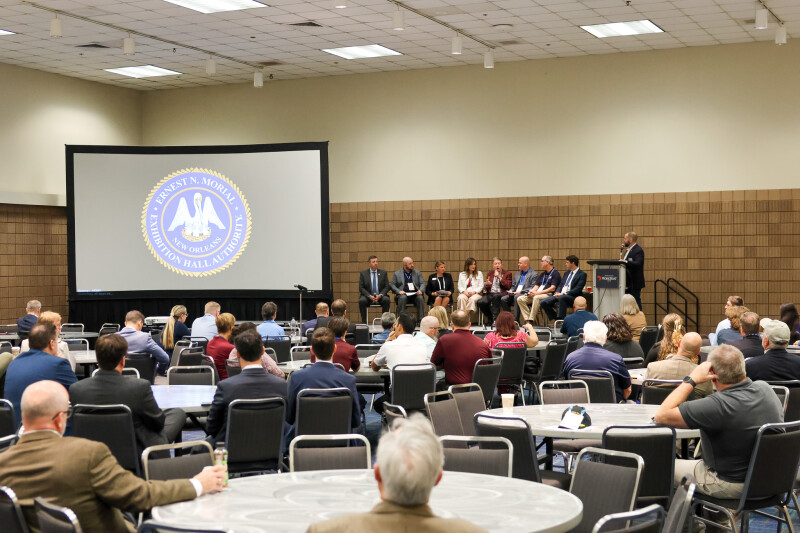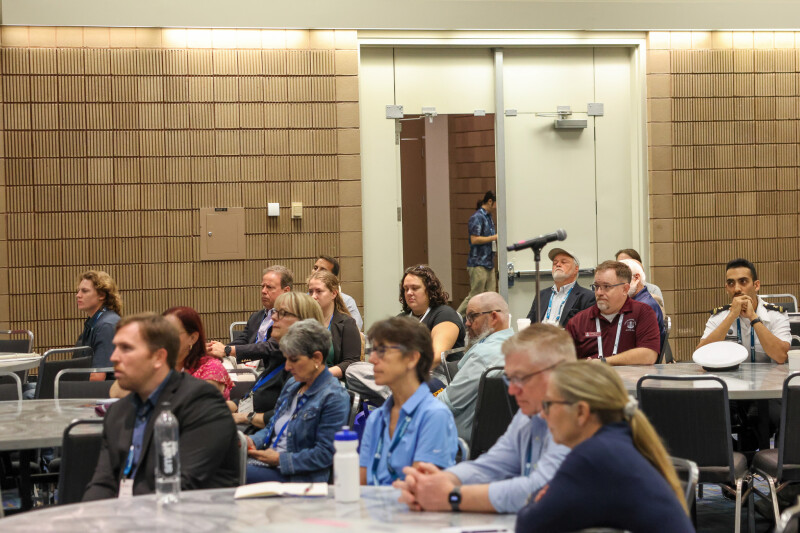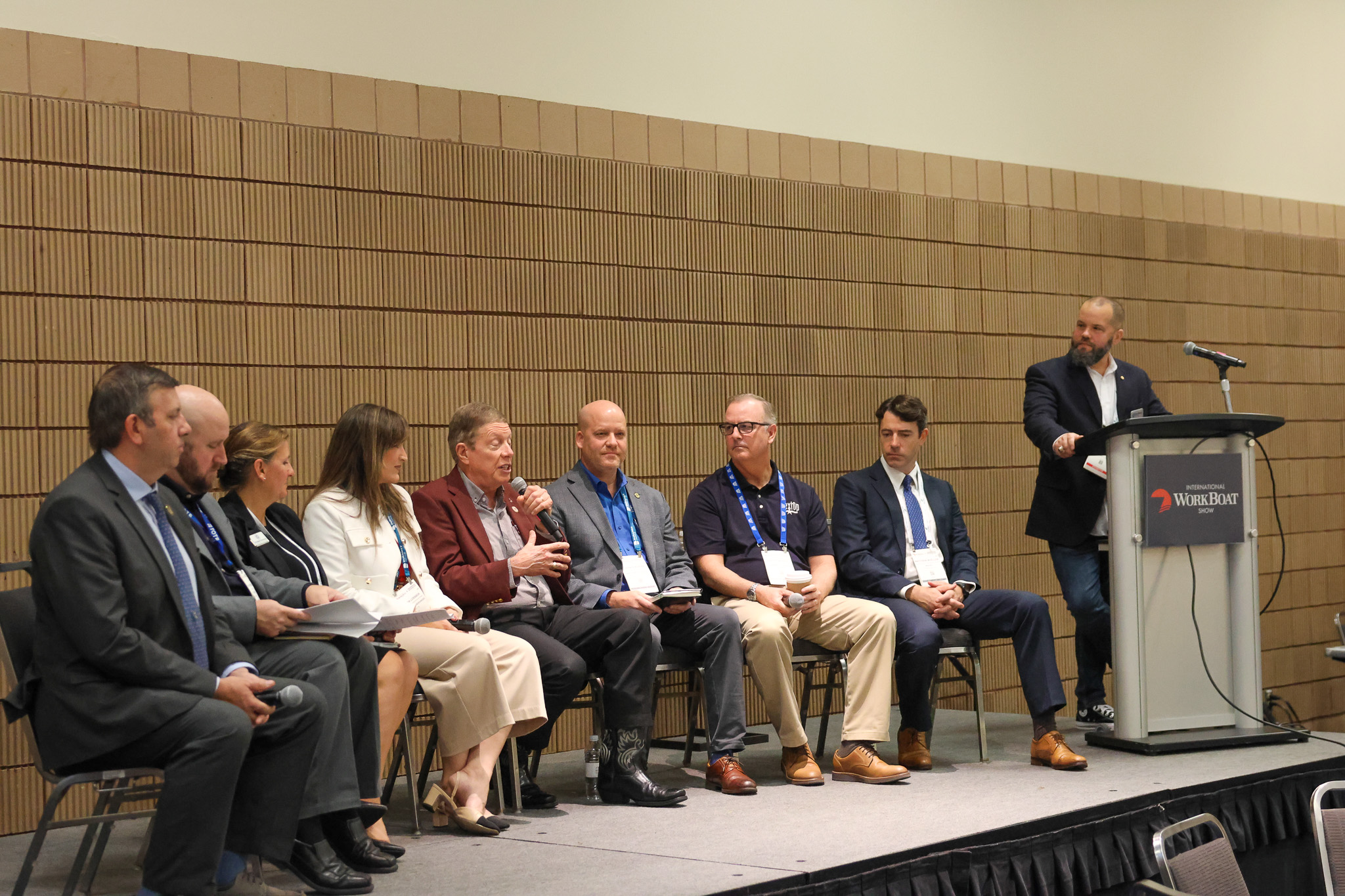At the 2024 International WorkBoat Show, industry leaders gathered to discuss workforce development — one of the most pressing challenges facing the maritime sector. From addressing recruitment shortages to exploring innovative partnerships, the conversation was both forward-thinking and realistic, offering valuable insights into how the industry can build a sustainable and skilled workforce.
A recurring theme throughout the session was the need for stronger collaboration between maritime schools, industry leaders, and local communities. Capt. Elizabeth Simmons, vice president of external affairs at Massachusetts Maritime Academy, summed it up well when she stated, “We're not going to do the thing that we're trying to accomplish without partners.” She emphasized that partnerships are crucial in addressing the workforce gap, particularly in maritime education and training. Simmons pointed out that the collective efforts of maritime academies, community colleges, and private companies can create a powerful network to attract, train, and retain talent.

In Houston, this kind of partnership is already showing results. John Stauffer, associate vice chancellor of maritime at San Jacinto College, shared the efforts made to enhance maritime education with cutting-edge technology. He explained that “the Houston Pilots purchased free bridge simulators for us and put them in the college.” These simulators, purchased through a collaboration with the Houston Pilots, are part of a broader initiative to modernize training facilities and give students hands-on experience with the latest equipment. “Chevron just adopted nine high schools with maritime programs to go ahead and build up their simulation capabilities,” Stauffer added, really emphasizing how major industry players are getting involved at the grassroots level.
Another topic that sparked discussion was the role of social media and digital marketing in attracting the younger generation. As more students turn to platforms like Instagram, YouTube, and TikTok to discover new career opportunities, maritime institutions are adapting to meet them where they are.
“Our admissions office is using social media to create short video clips about current students talking about why they came, how they found out about maritime, and what they're looking to do with their careers,” said Simmons.
This approach, which focuses on sharing real student experiences, is proving to be an effective tool in reaching potential recruits, especially those who may not have considered a maritime career before. Though it’s an approach in early stages at many maritime schools, the panelists collectively shared they hope to devote more resources in the future toward video creation for these platforms.
Col. Michael E. Fossum, COO and vice president of Texas A&M Galveston, touched on the importance of using digital tools to not only reach students but also to engage their families. Geo-tracking technology is one of those tools online which is the process of monitoring or recording the physical location of individuals in real time. “We’re able to see what the students are interested in as well as where they are located,” Fossum said. The panelists also shared that geo-tracking helps them understand the students’ parents as well. The schools can create the geo-fences around certain locations. He emphasized that many students first learn about the maritime industry through their parents, making it essential to engage families in the process.
While digital marketing strategies are becoming essential, funding for such initiatives remains a key challenge. Capt. Jeff Spillane, dean for the school of maritime education & training at SUNY Maritime, acknowledged the difficulty many schools face when it comes to securing the resources necessary for outreach. “That's usually our limiting factor — how do we pay for it?” Spillane asked. “We’re trying to figure out how to come up with the resources for it.” He highlighted the financial constraints that maritime academies often face, particularly in the context of marketing and outreach programs.

Despite these challenges, the panelists agreed that innovative approaches, such as the use of new training vessels, can serve as powerful recruitment tools.
Maria Lossada, director of talent acquisition for crewing at Core Group Resources, praised the impact of modern training ships and said, “Those are some of the best advertising things we can do to recruit our new students.”
She explained that unlike older, converted vessels, these new training ships are state-of-the-art platforms with the latest technology. “Rather than saying, 'Oh yeah, it was a converted cargo ship built in 1967,' these are brand new, keel-built training ships, first in class. That is a huge boom for all our next generation.”
In addition to the vessels themselves, the training ships provide an opportunity to raise awareness about maritime careers and the benefits of joining the industry. As Capt. Spillane pointed out, the presence of these new ships signals to prospective students that maritime careers are evolving and embracing cutting-edge technology. “That is a huge boost for all of the next generation,” he said. The fact of emphasizing the importance of showcasing modern, high-tech training environments to attract younger recruits was a continuous theme throughout the session.
At the end of the session, it was evident that the maritime industry is on the right track, but there is still much work to be done. The key takeaway was that building a skilled workforce will require ongoing collaboration, innovative marketing, and investment in new technologies. The partnership between educational institutions, industry leaders, and communities will be vital to ensuring that the maritime sector can meet its future labor demands.
With continued efforts to improve education, engage new students, and embrace technological innovation, the industry is poised to thrive in the coming years.





